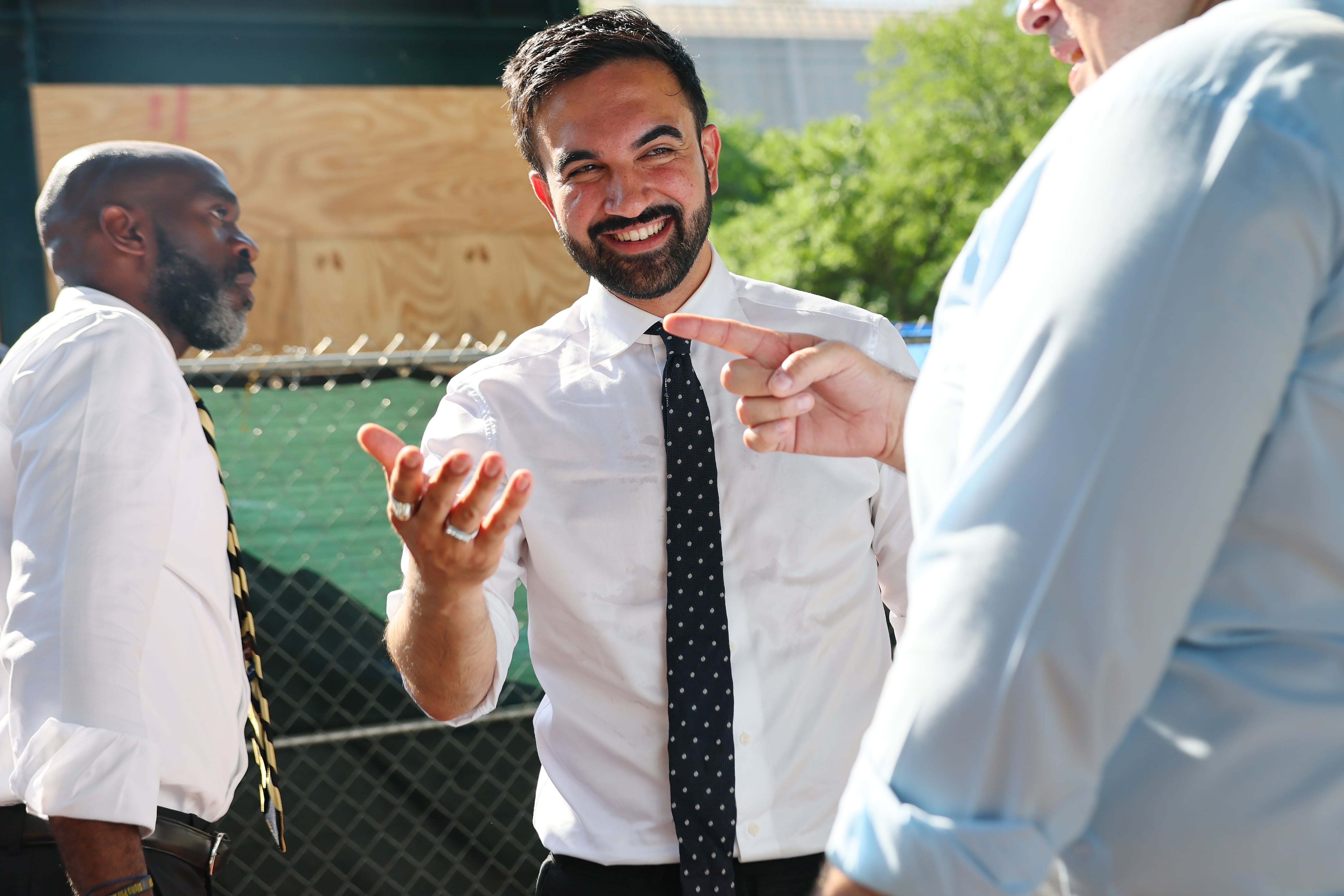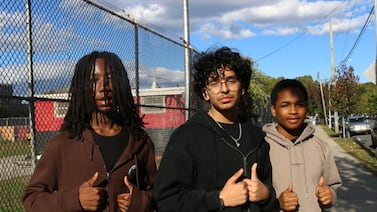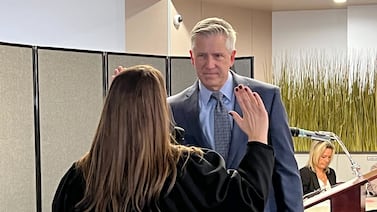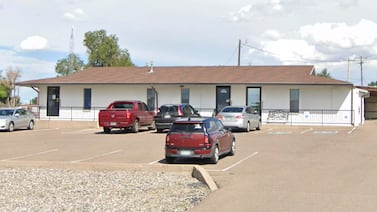Sign up for Chalkbeat New York’s free daily newsletter to get essential news about NYC’s public schools delivered to your inbox.
Queens Assemblyman Zohran Mamdani is leading in the Democratic primary for New York City mayor, setting the stage for a surprising upset in the race for City Hall.
Results could be a week away since no candidate garnered enough first-choice votes to win outright Tuesday night, but former Gov. Andrew Cuomo conceded the race and called Mamdani to congratulate him.
With 90% of first round votes counted, Mamdani won 43.5%, according to the Associated Press. This put him ahead of Cuomo, who came in with 36.3% of the votes, followed by city Comptroller Brad Lander with 11.4%.
Since the 33-year-old democratic socialist secured less than the 50% threshold needed for an immediate win, the city’s ranked choice system kicked in. The elections board is expected to release a preliminary tabulation of the ranked choice results as early as July 1, with an official, certified tally expected three weeks after the election.
But Mamdani’s opponents were treating Tuesday’s results as a victory for the upstart candidate.
“Tonight is his night. He deserved it. He won,” Cuomo told supporters Tuesday night. “We are going to take a look and make some decisions.”
In past elections, the winner of the Democratic primary had a strong shot at the mayor’s office, which oversees the city’s school system. But this year, the candidate who moves onto the Nov. 4 general election on the Democratic party line may still face an uphill battle.
In New York, third parties can nominate candidates who are already running under the major parties. So if Cuomo ultimately loses the Democratic nomination, he can run in the general election on an independent ballot line called Fight and Deliver, a party he created.
Mayor Eric Adams, who sat out the Democratic primary race, is running as an independent under the“EndAntiSemitism” or “Safe&Affordable” ballot lines. Additionally, Curtis Sliwa, the founder of the Guardian Angels, is running on the Republican ticket, and Jim Walden, a former assistant U.S. attorney, will also be on the ballot as an independent.
The mayor of New York City has a tremendous amount of power over the nation’s largest school system. Under mayoral control, which became state law in 2002, the city’s chief executive unilaterally picks the chancellor who oversees the Education Department’s $40 billion budget, roughly 150,000 employees, and nearly 911,000 students attending about 1,600 schools.
Mamdani’s education record
Mamdani doesn’t have a deep record when it comes to New York City’s K-12 schools.
As a legislator, he was among several sponsors of various education-related bills that have not been signed into law. One would require all school districts in the state to participate in the national school lunch program to serve free meals to students (as New York City already does).
He also sponsored a bill to overhaul how schools handle misconduct, banning suspensions for minor infractions like tardiness or dress code violations, and requiring schools to have professional development on restorative justice practices, which emphasize conflict resolution and relationship-building over punitive approaches.
Mamdani signed on to sponsor a bill to provide language assistance services for parents who don’t speak English and another to bolster school-based health clinics. He supported a bill to make the Muslim holidays of Eid al-Fitr and Eid al-Adha school holidays across the state, as they currently are in New York City.
He signed onto a bill that would provide grants for schools to install solar panels, one that would require elementary and high schools to provide an Asian American history curriculum, and a bill to mandate instruction on climate change.
Mamdani also supported the Student Journalist Free Speech Act, which would protect students’ free speech rights in public high schools, and a bill requiring schools to include instruction on eating disorder prevention in health education for students in grades 6-12.
Cuomo’s education record
Cuomo touts his education record as a bright spot during his time as governor, but he often faced pushback from educators and advocates while he was leading the state. He came out of the gate with an aggressive reform agenda, attempting to overhaul teacher evaluations by tying them to state test scores. But he ended up relenting in the face of backlash of the massive opt out movement in the suburbs.
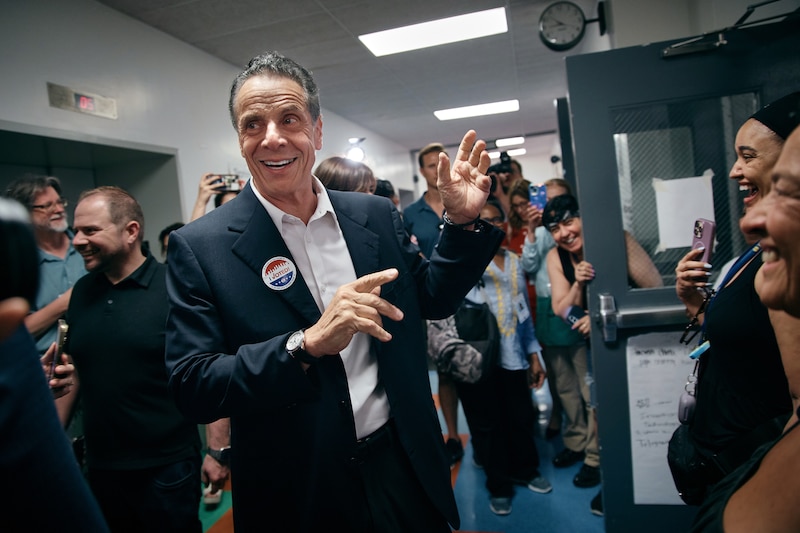
The former governor resisted massive increases in education spending, only to give in later by boosting state aid to schools. For years, he refused to fully fund Foundation Aid, a state funding formula that sends more money to high needs schools. According to that formula, created after a long-running lawsuit found the state failed to provide a “sound, basic education” to New York City, Cuomo short changed city schools by billions of dollars, advocates complained. (Still, New York spends more per pupil than any other state.)
Cuomo’s proposal to fund “free college” attracted much fanfare, but it ultimately was more style than substance thanks to the fine print: Students had to live and work in New York for as many years as they received free tuition, and if they left, they’d have to pay the scholarship off as a loan.
And while leading New York’s response during the pandemic, Cuomo had initially said he’d leave the decision whether to close schools to the state’s roughly 700 school districts, before pivoting on his plans for New York City, giving the Big Apple just 24 hours to come up with plans.
Amy Zimmer is the bureau chief for Chalkbeat New York. Contact Amy atazimmer@chalkbeat.org.

